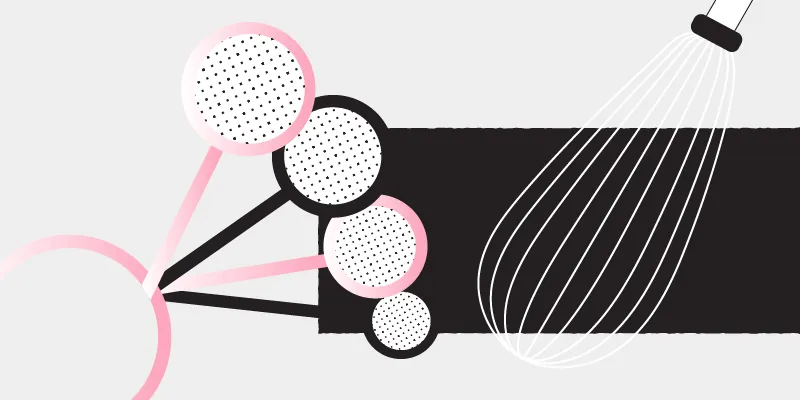If you have recently become visually impaired or are changing to a new living situation, this blog post shares 5 simple adaptations to help you with your daily living and chores.
While everyone is different and there are varying degrees of vision loss, there are usually fairly simple, low-cost changes you can make to get the most out of your day.
Also, be sure to check out our friends at hireahelper.com who has a collection of blog posts on DIY projects to get your stuff organized with their pro-tips.
Adaptations to Help With Daily Living and Chores
There are tons of things you can do to make you or your loved one’s day-to-day life more efficient. These home adaptations are simple and can give you a sense of independence and safety while performing everyday tasks.
Label Foods
Rearranging the furniture in your house can help you move around more easily and avoid injury. There are also certain ways you can arrange your furniture to add convenience and functionality to your living space. You can:
- Use braille labels to mark foods and medicines, especially if they can pose some kind of danger (like if you are allergic or need to take a specific dose).
- Use rubber bands to identify certain food or medicine items. Place a different number of rubber bands on each different container.
- Use brightly colored and labeled index cards to label items around the kitchen. (Of course, this would be impractical for those who are sightless in both eyes.)
- Use pipe cleaners, velcro, velour pads or foam alphabet letters to label different things (like canned goods).
- Learn to identify kitchen items by their weight, location, sound, size, or shape. Likewise, things should always be placed in the same spot, and you should make sure your family follows these house rules whenever possible.

Adapt Your Kitchen
To some, cooking is one of their favorite things to make the time pass by faster; it also helps relieve stress. Cooking with impaired vision can be not only frustrating but also dangerous if the right precautions aren’t taken. When cooking, there are a few safety tips, tricks and adaptations we’d like to suggest:
- Use scoop measuring cups that hold exact amounts such as ½ cup, ⅓ cup and 1 cup measurements. You can store these inside food canisters like flour, sugar or oatmeal for added convenience. Always have extra measuring cups nearby when cooking.
- Store spices in baby food jars with a wide mouth for easier measuring.
- Keep a cutting board that has a light and a dark side so that you will have a contrasting surface no matter what you are cutting.
- Store knives in old paper towel rolls so that you don’t accidentally touch the sharpened edge of the blade.
- Keep everything in its place at all times. It will be so much easier to navigate your kitchen if you know exactly where to look.
- Keep a cafeteria tray handy to use as a prep area. This will help you contain any spills and keep you organized.
- Label shelves and drawers, if needed.
Christine Hà, Masterchef Vietnam, Co-host of Four Senses
Adjust for Housekeeping and Laundry
Even simple chores like laundry can take longer than necessary if you don’t have some modifications in place. There are a few things you can do to make life easier:
- Place tactile stickers on the dials and commonly used settings of your washing machine and dryer. If you share a household, you can use transparent stickers to make sure the rest of your family can see the dials as well.
- Pin your socks together with sock locks before putting them away, and teach your family to do the same.
- Load the dishwasher from back to front and remember to always load knives and forks point-side down.
- Place safety pins in clothing of the same color or label clothing with a letter of clothing color on the tag.
- Place dividers in drawers and closets to separate different kinds of clothing.
- Label all cleaning supplies with braille or felt letters so that you know what you are cleaning with at all times.

Improve Communication and Technology Usage
Part of feeling at home in your living space is being able to function and use technology normally.
Check out David Weston’s blog post where he reviews various assistive products, be it hardware- or software-based, extensively.
Here are five tips to help you stay in touch with your loved ones and the world more easily:
- Make sure your telephones have large print keypads or dials.
- Use felt-tip markers on white paper or 20/20 high-contrast pens when writing.
- Purchase a large-screen, high-definition television to improve your viewing experience.
- Turn your computer’s settings to use speech synthesis to read on-screen text and relay screen contents. Comparatively, one can enable accessibility services on their mobile phones such as TalkBack on Android or VoiceOver on iOS.
- Make sure all emergency contact numbers are written largely and clearly or programmed into your phone.
Modify for a Service Dog
If you or your loved one is fully blind you might have a seeing-eye dog. This can be a life-changing opportunity, but it requires lots of preparation. While we could write an entire guide on this subject alone, here are some easy modifications you can make for your service dog:
- Make sure any paths or walkways are large enough to accommodate both you and your service dog.
- Ensure the backyard is fenced and doesn’t have any holes your pet can escape from.
- Give your service dog ways to open and close doors around your house so that they can always get to you. You can do this by adding “tugs” to each door and teaching them how to use them.
- Add tugs to the fridge, freezer or any cabinets you will want them to be able to access.
- Store toxic items securely in a drawer or cabinet your dog doesn’t have access to.
- Install a self-feeding system so that they are always fed and have access to water
- Create a sleeping area for your pup in your room. Make sure it is nearby in case you need assistance but also in a place that you won’t trip over it
Home adaptations for visual impairments are meant to enhance your home and make it easy for you to do the daily tasks you need to do. We hope you found some of our ideas helpful and they make a positive difference in your life.
Till next time.
Check out our other blog post on other home modifications tips and tricks.
Naidex | Tech Talk
How Data Analytics Impact
Blind Lives
Make Hackathon
BAWA Cane at Infineon LG Make Hackathon
Facts and Guide
How to pick the correct length of a white cane for a blind person?




This article is great!